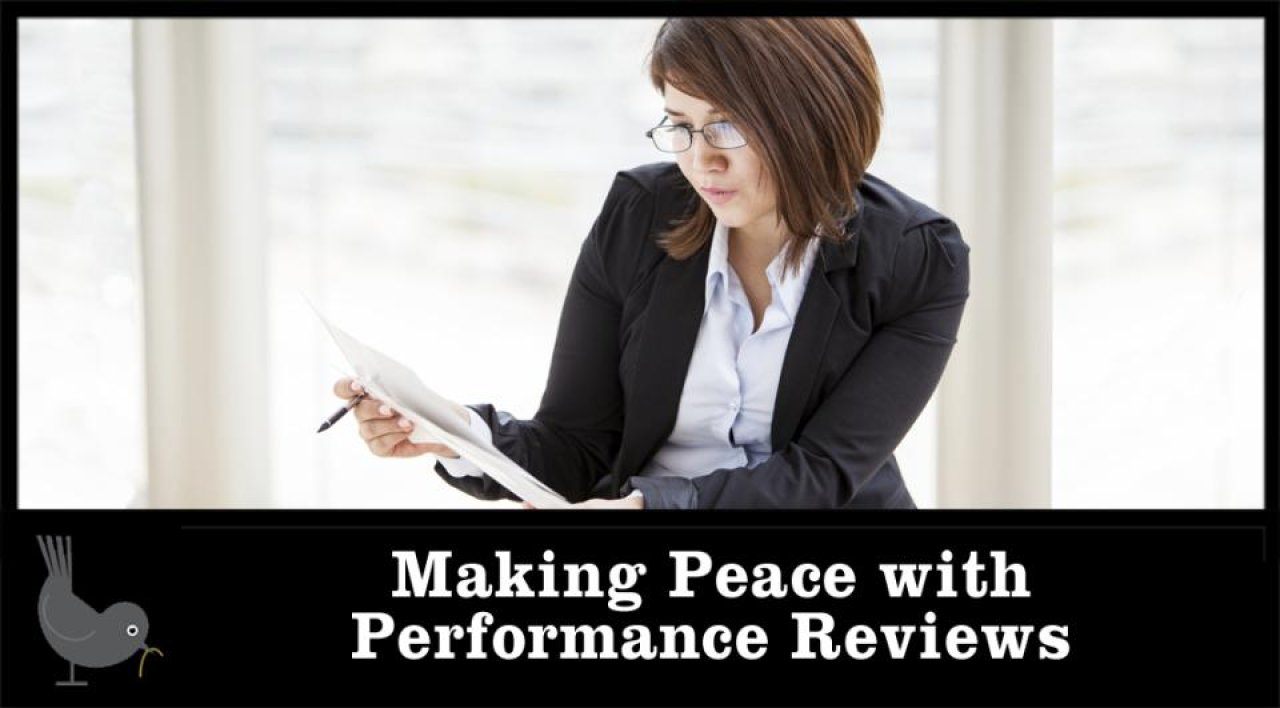Making Peace with Performance Reviews

All leaders want to have a dynamic, efficient and productive business with a culture dedicated to delivering relentless quality. They want engaged employees who believe in the vision and purpose of the business. And more than anything ... they just want employees that do their job. But what leaders want, requires that leaders also do the most essential part of their job - to coach and inspire employees. Performance reviews are simply part of the work of leadership to bring out the best in those they lead.
Here are six No-Compromise Leadership strategies to make peace with performance reviews:
- It's not about confrontation: A confrontation is a hostile or argumentative meeting between opposing parties. A confrontation means that both parties are prepared for battle with their shields up. “Shields up” is a defensive stance that makes communication and open dialog damn near impossible. It is the "confrontational" mislabeling of performance reviews that prevents them happening or happening well. Must do: Leaders must lower and put their shields away first. The process of reviewing an employee's performance is just that ... a review. That review will spotlight the good performance as well as performance that needs improvement. Keep your coaching hat on. There is no need for a battle helmet.
- It's about managing expectations: Everything about business is about planning the work, doing the work and reviewing the outcome to do it better. This is done for the business as a whole, by department ... and by employee. Must do: For employees, being scheduled for a performance review doesn't usually mean having some one-on-one fun time with the boss. Managing expectations means giving employees clarity that the intent of the performance review is to have a check-in on what's going well and what needs improvement ... so everyone can get to a better place. Removing the fear and anxiety before the performance review makes the process more constructive, open and enlightening.
- It's about keeping it safe: Because performance reviews can become emotional and stressful, they can turn confrontational when addressing certain performance and behavior issues. And yes, employees can have differing opinions of their work or why their performance was below par. It is the leader's responsibility to keep the environment safe so both parties can achieve a positive conclusion. Must do: Stay in your coaching mode and remain respectful to avoid escalation. If the conversation becomes heated, cool it down with statements such as, “I know this is tough stuff to discuss. Lets work together to find a solution.” You can also ask the employee if he or she would like to take a five-minute break. Never attack. Never contribute to the escalation of tensions. Allow the employee to speak, and really listen. Ask questions to better understand the employee’s point of view.
- It's about getting it all out: There will always be those performance reviews that need to focus on unacceptable performance and behavior. Depending on the severity of the issues, this is when the probability of confrontation is at its highest for the leader and the employee. To avoid the tough conversation, it’s easy to circle the issue and never address it. Must do: Waiting to address the tough stuff until a performance review is nothing more than avoidance and procrastination. Major performance and behavior issues must be addressed sooner rather then later. The more time that passes simply enables what you don’t like to continue. And the longer it continues, the more difficult it is to address. Performance reviews are more productive if the tough stuff has already been addressed. Don’t save the tough stuff for the next performance review. If there is tough stuff to address during a performance review, do not conclude the review without addressing it.
- It's about solutions and next steps: A performance review that is all about what the employee needs to improve is the equivalent of handing an employee a report card. Every performance review should be solutions based and provide next steps to help the employee achieve his or her full potential. Must do: When an employee enters a performance review knowing that the company is committed to his or her success, performance reviews take on a new meaning and purpose beyond just addressing strengths and weaknesses. Asking a simple question like, “What can we do to help you?” elevates the nature of the performance review. Having prepared support, training and next steps for the employee is the coaching aspect of performance reviews. If you’re not prepared to offer solutions and next steps ... you’re not prepared to conduct a performance review.
- It's about performance ... not pay: At Strategies, we teach and coach owners to separate the conversations regarding performance and pay. The moment “pay” injects itself into a performance review, it takes over and turns the performance review into a pay review. It adds stress and distraction to the process by having the “So ... am I getting a raise?” as the only question that’s begging for an answer. Must do: There are performance reviews and pay reviews. They are never done at the same time in the meeting. A series of good performance reviews is just one indicator that it may be time to schedule a pay review. There are only two reasons to schedule a pay review. The first is to review the employee’s current pay rate and map out the expectations that must be met to earn a pay increase. The second is to give an employee a raise. All raises must be financially justifiable, affordable and entered into the company’s cash-flow plan/budget. The rule is cash flow first ... payroll increases second.


Comments
No comments found. Start the conversation!
Leave a Comment